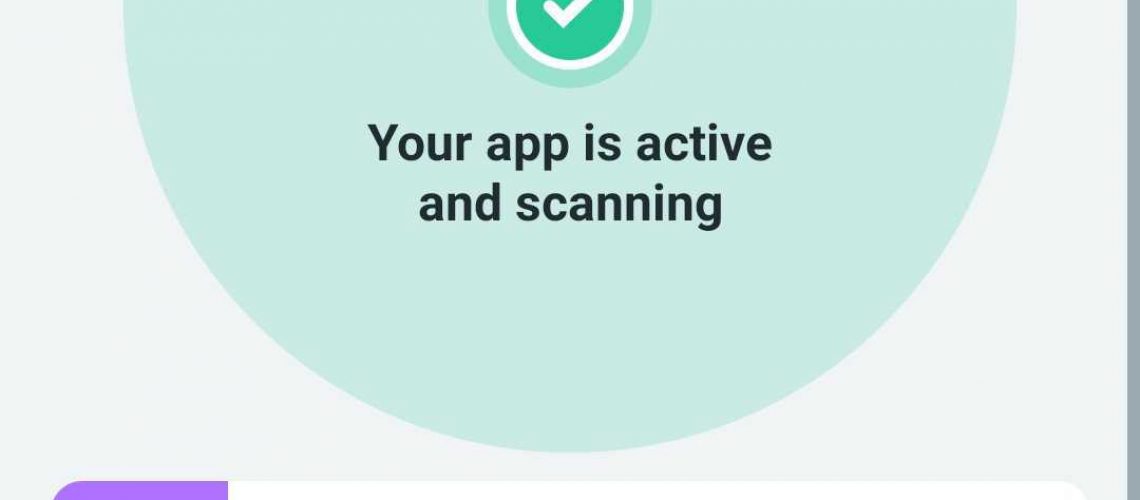Accessible. Simple. Contactless. All reasons why the use of QR codes is perfect for the NHS track and trace app.
We’ve said ‘the return of QR codes’ but here at Donater they have been at the heart of our business from the very beginning. The accessibility, simplicity and contactless nature of QR codes is why we’ve been using this technology to help charities fundraise in an increasingly digital age.
In China in particular, scanning a QR code is commonplace when making electronic payments. Perhaps the use of them within the NHS track and trace app will bring this technology back to the forefront in the UK as well.
The NHS contact-tracing app
Yesterday saw the launch of the Covid-19 contact-tracing app in England and Wales, with over one million people having already downloaded it.
As people across England and Wales download the long-awaited NHS contact-tracing app on Thursday, they’ll also contribute to one of the most unlikely revivals of the Covid era: the humble QR code.
This new and improved version of the app (compared to the one trialled on the Isle of Wight in May) urges users to ‘check in’ to venues such as pubs, restaurants and hairdressers using the app.
What do app users have to do with the QR code?
It’s easy-peasy to do this. All users need to do is open the app, scan the venue’s QR code and done! They can then be traced and contacted should they have been in close proximity to a confirmed positive case of Covid-19.
As we’ve said, this is tech that we’ve used from the beginning here at Donater. It always made perfect sense to us to use this straightforward and contactless method of engaging with people. It’s not come as a surprise that it’s seeing a resurgence even if it is more than 25 years old.
Where did QR code technology originate?
It all began in Japan, where it was invented to help within the country’s competitive car manufacturing industry.
It’s characteristic black squares essentially form a 2D barcode. Originally it was read by a laser, but with the emergence of camera phones brought with it the opportunity to scan these QR codes with a smartphone. The black squares hold encoded information in the centre using standardised patterns.
The advantages of QR codes
The codes held advantages over other more complex methods of data transfer – And this is still true today.
- Users don’t need to connect their device using a plug
- Users do not have to navigate any ‘connection’ screen e.g. Bluetooth
- It’s as simple to use as pointing your camera phone at the code and scanning it
Accessible, simple and contactless – Perfect for digital communication. It was extremely popular in the late 2000’s due to the prevalence of camera phones, and was quickly seen everywhere.
Where did QR codes go then?
You might be wondering why you’re not more familiar with QR codes in that case. However, despite early popularity, it was largely halted by Apple’s iOS operating system due to the fact you needed to download a separate app to use QR codes on their phones. In an age of everything being easy to use, this was a step too far for many.
NFC technology was also on the rise. This ‘near-frequency communication’ tech permitted mobile payments like Android and Apple Pay. There are many similarities between this and QR codes in terms of ease-of-use, but NFC can transmit more data and is more easily rewritten.
Why are we seeing a return of QR codes now?
Well, they never really went away. The most common way of making an electronic payment in China is via QR codes. For businesses, particularly small ones, printing off a QR code is much cheaper than purchasing and using a card terminal. Similarly, with Donater’s QR technology, our smart stickers are a simple, cost-effective way to take digital donations.
The simple-to-use, cost-effective, contactless nature of QR codes is why it’s perfect for contact tracing and the NHS app. It’s a quick, cheap way of introducing widespread digital infrastructure and we wouldn’t be surprised if we started to see more QR code technology springing up around businesses over the coming months.
QR codes are here to stay, and we’ve never doubted them.
To join the QR crowd and find out how Donater can help your organisation raise funds through simple smart stickers, get in touch with us today.


